Pashupatinath - Nepal's Holiest Hindu Site
Thursday, December 05, 2013
 Kathmandu, Nepal
Kathmandu, Nepal
Located near the airport along the Bagmati River on the eastern side of Kathmandu is the site considered by Hindus to be the most sacred in Nepal . As well as a place for pilgrimage and worship, for Hindus that also makes it a desirable place to spend the end of one’s life, to die, and be cremated and have one’s ashes enter the river’s holy water, much like better known Varanasi on the Ganges River in India. That creates a place where an impressive level of human suffering is on display with beggars of all sorts, troops of blind musicians performing, and those with twisted contorted bodies and all types of disabilities seeking the benefit from the generosity of others.
Among the throngs around the site was a small army of mostly young men trying to befriend tourist types to make a few rupees by guiding them around for a while. I think operate together, a conspiracy to all be as persistent and annoying as possible to any tourist unaccompanied by a guide until they give up and employ one just to end the hassle; once you have a local with you as guide you’re his and the others all give up being a nuisance towards you. I ended up doing what I say I’m never going to do and using one for 500 rupees (about $5) .
Dilip was fairly soft-spoken middle aged guy who hadn’t been too aggressive and seemed to know what he talking. He actually turned out to be fairly useful for the place by telling me where it was acceptable or inappropriate to take pictures, for pointing out erotic Kama Sutra temple art and phallic lingams in hidden locations, and for introducing me to some Sadhus (ascetic Hindu holy men) whose odd appearance is such that I would probably not have approached them on my own. I got some pictures of them and even got blessed (all for only another 250 rupees!) Dilip also explained the iconography and different Hindu gods. I figure by the time I leave India I will have heard about them often enough that I will finally remember who’s who in Hindu gods just like I finally learned the who’s who of the ancient Egyptian gods when I was there.
So if you are a Hindu in Nepal this is the preferred place to die and be cremated. There appeared to be a quite steady flow of bodies wrapped in shrouds being brought to the riverbank on stretchers for ritual purification, a process that can be viewed from a high platform on the opposite side of the river (currently more of a creek in the dry season) . The body of the deceased is then taken to the funeral ghats, platforms along the river where the body is placed on a wood pyre and cremated. This is supposedly a joyous occasion as the deceased is finally released from earthly suffering, but the wailing of the friends and relatives present indicates much normal human grief. I expect to see this all again on a much vaster scale in Varanasi in less than a week.
The main temple at Pashputinath features a massive golden bull. Unlike Buddhist temples, however, this and many other Hindu temples are not open to those who don’t follow the religion, so I had to settle for a peek at the golden bull’s butt through the entrance doors. Dilip also pointed out some of the other parts of the substantial sickness and death complex around Pashputinath, including a hospice center and a walk through the courtyard of a home for the indigent elderly with over 300 residents.
Pashputinath was my first introduction to a significant Hindu religious center, but there will be mny more to come. My initial impressions are of significant culture shock in a way I’ve never felt at Buddhist sites in East and Southeast Asia or at mosques in the Islamic world..
Other Entries

 Kathmandu, Nepal
Kathmandu, Nepal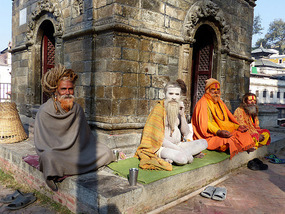
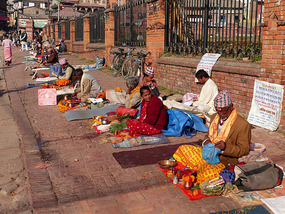



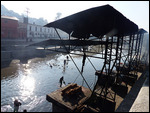
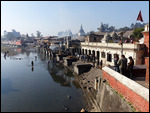
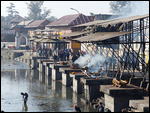
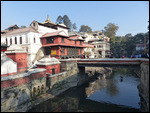
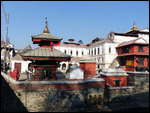
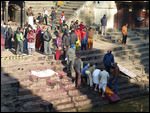
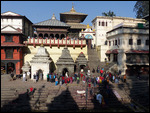
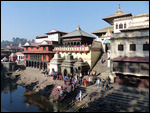
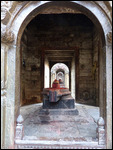
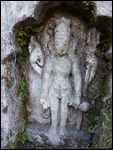
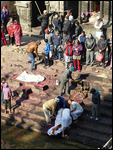
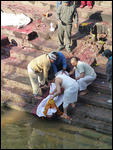
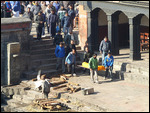
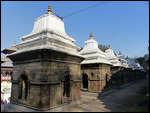
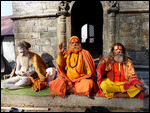
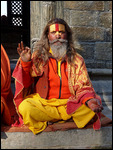
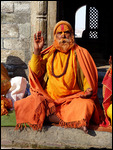
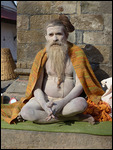
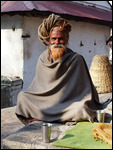
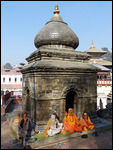
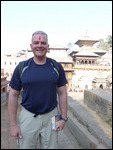

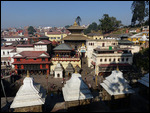
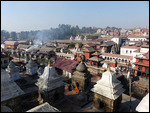
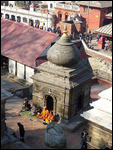
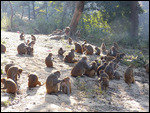
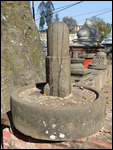
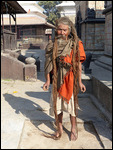
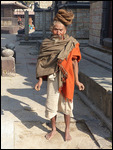
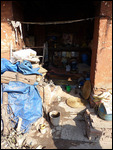
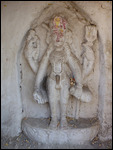
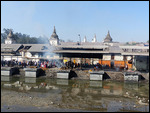
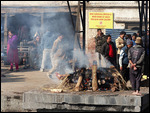
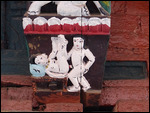
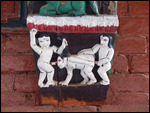
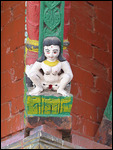
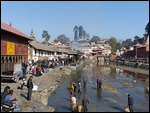
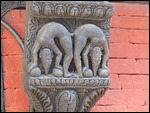
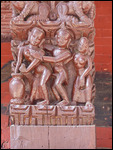
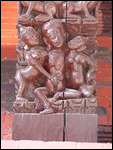

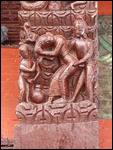
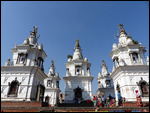
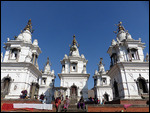
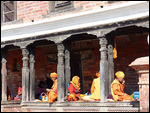
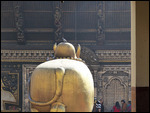
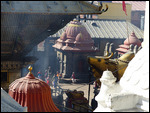
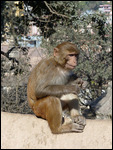
2025-05-23